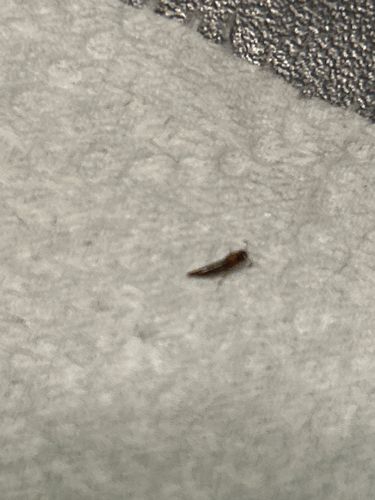Thrips
Scientific Name: There are over 7,000 known species of thrips; a specific scientific name cannot be given without further identification. Examples include Frankliniella occidentalis (Western flower thrips) or Thrips tabaci (Onion thrips).
Order & Family: Order: Thysanoptera, Family: Varies (e.g., Thripidae, Phlaeothripidae)
Size: Generally, thrips are very small insects, ranging from 0.5 mm to 14 mm in length, but most commonly between 1 mm and 2 mm.

Natural Habitat
Thrips are found in a wide variety of habitats, including gardens, agricultural fields, greenhouses, and indoor plants. They are often found on leaves, flowers, and fruits of plants.
Diet & Feeding
Most thrips species feed on plant sap by piercing cells and sucking out the contents. This can cause damage to plants. Some species are predatory and feed on other small insects or mites.
Behavior Patterns
Thrips are active insects, especially in warm weather. They reproduce quickly, with some species capable of parthenogenesis (reproduction without fertilization). They undergo incomplete metamorphosis (egg, larva, pupa/prepupa, adult). They can fly but often prefer to crawl or jump. Many species are attracted to yellow or blue colors.
Risks & Benefits
Risks: Many thrips species are considered agricultural pests, causing significant damage to crops by feeding on plants, transmitting plant viruses, and distorting growth. They can also be a nuisance indoors. \nBenefits: Some thrips species are beneficial as biological control agents, preying on other pest insects or mites. They can also play a role in pollination, though this is less common.
Identified on: 8/15/2025